Sega’s turn-of-the-millennium spirit also lives on through the subsequent generations of developers who’ve been inspired by its legacy. It lives on through the ambitions of those who build upon and reinvent its concepts, and through those who create new and bespoke experiences of their own — just as Sega’s studios had done at their creative peak. At its core, the Sega spirit is a pioneering spirit. And when we pay homage to its past, it stands to reason that we ought to embrace the future, as well.
Conceived as a pandemic passion project by solo developer Cassius John-Adams, Mile High Taxi (officially stylized as MiLE HiGH TAXi) is the latest game to shepherd that legacy. It pays clear homage to Crazy Taxi but with a futuristic twist. Mile High supplements AM3/Hitmaker’s fare attack concept with the verticality of that chase scene in The Fifth Element where Bruce Willis nosedived his hovercab through hovertraffic to evade the hovercops.
The game wears its influences like a hood ornament, tasking you with picking up and dropping off passengers throughout an exhausting and suffocating metropolis. As with Hitmaker’s forebearer, you’ll earn some cash and replenish a ticking countdown timer with each successful drop off. Those fares are well earned as you’ll spend most of the time weaving through (and into) a grid of infinitely tall skyscrapers while being constantly berated by the passenger and pedestrian populace.
Mile High’s towering cityscape is irradiated with billboards featuring clever nods to ‘80s and ‘90s films like Idiocracy, The Fifth Element (obviously), and Coming to America. Belying its title, Mile High Taxi appears to be set in a futuristic version of Toronto rather than Denver, Colorado – at least inferring from its abundant references to Tim Hortons and Quays (pronounced like “keys”, not “kways” as one NPC will frequently remind you). Either way, of all the dystopian cities I’ve explored in video games, Mile High’s is by far the most Canadian.
Conceptually, Mile High plays like Crazy Taxi in six dimensions with vertical maneuverability added to the formula. Unfortunately, it doesn’t take long for it to feel like precisely that: a formula. You begin by picking up customers on suspended platforms and pedestrian bridges, waiting as they leap into your cab (via karate kick, front flip, or diving chop) before stating the generic cross-streets and elevation of their destination. From there, it’s a mad dash to the drop-off point, with a floating arrow and GPS-style map for guidance.
The scoring system is a little obtuse. There doesn’t seem to be a rhyme or reason to the feedback you receive from passengers, but it's usually negative. Passengers frequently complain, except when you smash through street signs, stop lights, and patio furniture. They love that shit.
Which, fair. So do I.
Unfortunately, Mile High’s novelty wears thin after a few minutes of chauffeuring random passengers to indiscernible locations around its nondescript grid. Lacking distinct landmarks, varied street layouts, or unique neighborhood aesthetics, there’s little to distinguish one trip from the next. Each trip is approached more or less the same way, and Mile High’s fare loop dissolves into an amorphous, unmemorable haze long before the timer runs out.
By natural, if unfair contrast: Crazy Taxi’s gameplay was memorable because every trip told a story. Behind each fare was an individual who you connected to their job, to their hobbies, to their friends…and to God, maybe?
Each trip helped establish a tangible personality — not only for Crazy Taxi’s NPCs — but for its San Francisco-esque setting. Even when simply driving a preacher to church or a punk kid to the Tower Records, every fare revealed something about the people who lived there and how and where they chose to spend their time. And that, in turn, helped enrich the time I spent in that space. For each person I picked up, I could draw a mental map of the coming trip: strategizing the routes and shortcuts I might take and all the potential dashes and drifts en route. Meanwhile, the traffic, passenger timers, and twitch physics injected enough unpredictability and chaos to test even my best-laid plans. The balance between all those elements helped enshrine Crazy Taxi as a classic, even if the intervening decades and lapsed soundtrack licenses have taken their toll on its longevity.
As diligently as it pays homage to Hitmaker’s classic, Mile High Taxi shares neither the hooks nor tension that made Crazy Taxi so rewarding and addicting in the first place. It lacks the intensity of its buzzer-beating drop-offs and risk/reward shortcuts through oncoming traffic. In fact, Mile High’s other vehicles lack collision detection altogether.
In all, Mile High’s inspiration casts an even larger shadow than its skyscrapers. However, that’s not to say the game doesn’t have some charm and potential of its own.
Taking a step back – and away from its most prominent influences – I enjoyed Mile High Taxi most while cruising leisurely through its saturated and satirical cityscape. Among its game modes is Free Roam, which has players explore the city sans timers or fares. At one point, this mode glitched and let me pick up and drop off passengers while the timers remained disabled. And honestly, it kind of worked. At the very least, it afforded me the freedom to vibe in its setting but still engage in cabbie antics at my behest. That experience felt better suited to the design and flow of its cityscape.

I can imagine an alternate version of Mile High which goes beyond its arcade influences to explore and build on its own unique strengths. As currently constructed, its neo-Toronto would be an ideal venue for other verbs and activities to help better contextualize its spaces and distinguish the moment-to-moment play. For example, I’d see lots of potential in discovering networks of shortcuts and tunnels carved through its skyscrapers, with unique collectables to amass, customization options to unlock, score attacks for stunts and smashing stuff, and a memorable mix of destinations, characters, fares, chases, races, and other challenges to engage in, along with broader progression goals to work towards. Or maybe duck racing or some shit. I dunno.
Obviously, that’s not the experience Mile High strives for and even getting it to the state it’s in is a commendable achievement. Perhaps it’s unfair to expect any game — let alone a solo-developed title — to recapture the magic of Crazy Taxi. Hell, not even Crazy Taxi can do that. All said, I believe games like Mile High Taxi fare best when they dare to dream bigger than their influences and cast magic and shadows of their own.
----------------------
Thanks for reading. Additionally, here are some other random notes that I couldn’t eloquently fit into the body of the write up:
- We were provided with a pre-release Steam Key for Mile High Taxi and I’ve been playing it mostly on a Steam Deck docked to my TV.
- The game currently has three modes: a Crazy Taxi-esque Regular arcade mode, a Sequential mode where you drive one passenger at a time in order, and the aforementioned Free Roam mode.
- A few minor annoyances with the wayfinding: You basically have to rely on the GPS map to find your destinations but whenever there’s character dialogue, those text boxes can obstruct the map. Additionally, whenever you raise your elevation, the map tilts away to show the vertical relation of nearby pick-up and drop-off markers. While intuitive in theory, it also obstructs the map and can make it a pain to navigate vertically and horizontally at the same time.
- There’s no Bad Religion or The Offspring, but Mile High’s soundtrack is generally pretty solid. It gets a little tedious in that the same songs seem to repeat in the same order (so every time you start a new game, the same song plays first every time). A shuffle option would be welcome.
- I guess this was a video game review and apparently those are supposed to mention the graphics. So there, I just did.
- I encountered a few minor bugs and technical issues during my time with the game and most of them were hilarious.
- It's got what plants crave:



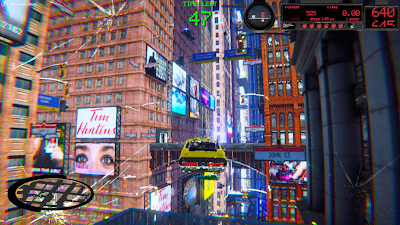




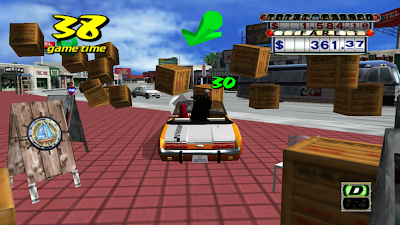
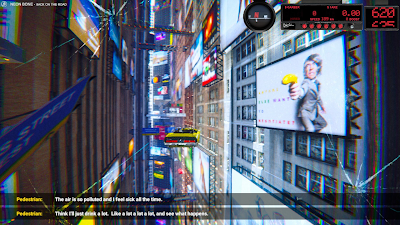
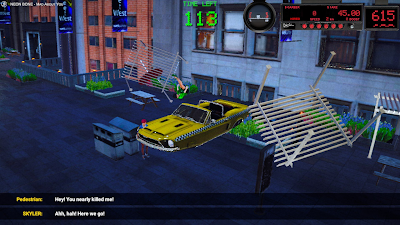
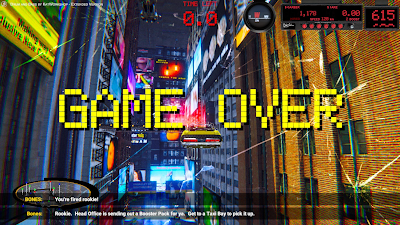


1 comment:
That's a bummer. I like the idea of a free roam though. That's a good way to get to know the map. Now bring on another, proper 'Crazy Taxi,' SEGA!
Post a Comment